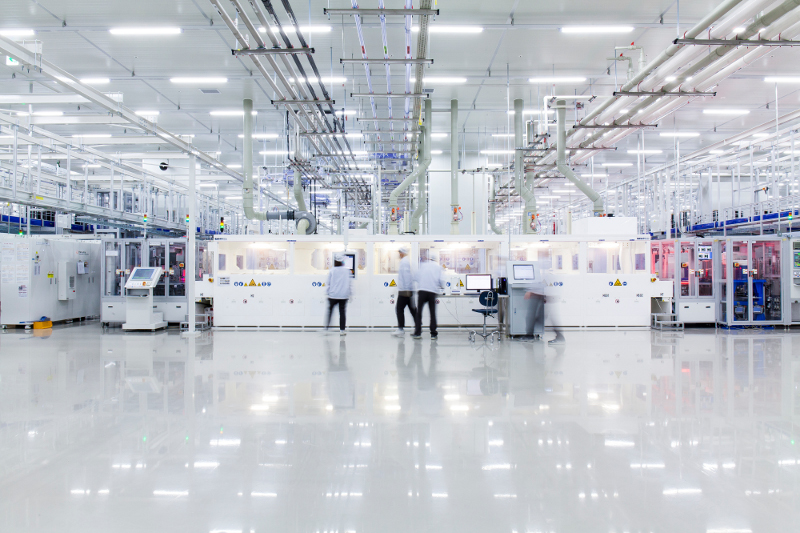South Korean solar company Hanwha Q Cells has posted an operating profit in its first quarter (Q1) financial results for 2017, coming on the back of an operating loss at the end of 2016.
The module and cell manufacturer, which is also ramping up its downstream objectives globally, saw income hit $28.3 million in Q1, compared to a loss of $21.5 million in Q4 2016. Year-over-year (YOY), Q1’s income was down somewhat on the $56.7 million posted in Q1 2016, however.
Revenue was also down YOY and sequentially, falling from $514.9 million and $565.2 million respectively to just $432 million in Q1 2017. Because Hanwha Q Cells has stuck with a decision taken last year to no longer disclose module and cell shipments in its quarterly filings, one can only speculate that this reduced revenue is largely as a result of lower module average selling prices (ASPs) and not reduced shipments.
Gross margin for the firm widened to 13.8%, up from 7% on Q4 2016, and gross profit was $59.8 million, up from §39.6 million in Q4 2016.
CEO and chairman Seong-woo Nam said that the Q1 results were “modestly ahead of plan”.
“We have returned to a profitable quarter despite a challenging industry environment,” said Nam. “We have been focusing on strengthening our sales backlog early on to increase our operational visibility in 2017 while diversifying our regional and segmental business profile to better navigate different market cycles.”
Earlier this year Hanwha Q Cells won the 1 GW tender in Turkey to build one of the world’s largest solar farms in Konya. Part of the terms of that tender include the creation of manufacturing facilities in Turkey – a project that will bring greater geographical diversity to the company.
On the technology front, Hanwha Q Cells’ Q.PEAK mono-PERC module range is set to welcome new 72-cell, 370 Wp versions later this year, the company said.
Hanwha Q Cells CFO Jay Seo added that the firm is well-positioned to “navigate through different industry cycles with our strong technology, product portfolios and cost-competitiveness”.
Current production capacity revealed by Hanwha Q Cells is 4.2 GW for cells, 4.2 GW for modules, 1 GW for wafers, and 1.55 GW for ingot. By the end of 2017, the firm expects to have increased cell and module capacity to 4.6 GW each. Full-year shipment guidance is noted in the range of 5.5 to 5.7 GW, while Q2 revenues are expected to be between %560 million and $580 million.
This content is protected by copyright and may not be reused. If you want to cooperate with us and would like to reuse some of our content, please contact: editors@pv-magazine.com.



By submitting this form you agree to pv magazine using your data for the purposes of publishing your comment.
Your personal data will only be disclosed or otherwise transmitted to third parties for the purposes of spam filtering or if this is necessary for technical maintenance of the website. Any other transfer to third parties will not take place unless this is justified on the basis of applicable data protection regulations or if pv magazine is legally obliged to do so.
You may revoke this consent at any time with effect for the future, in which case your personal data will be deleted immediately. Otherwise, your data will be deleted if pv magazine has processed your request or the purpose of data storage is fulfilled.
Further information on data privacy can be found in our Data Protection Policy.